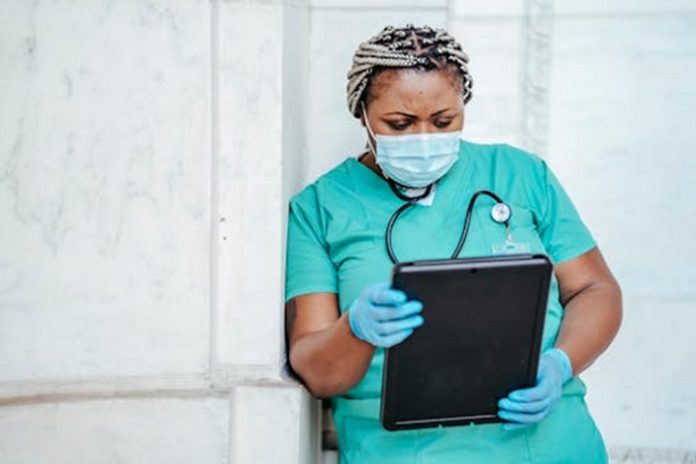In modern healthcare, surgical safety has become a focal point for hospitals, medical practitioners, and policymakers. With the growing complexity of surgical procedures, the need to minimise risks and enhance patient safety has never been more pressing, especially considering the continued pressure medical negligence, birth injury, and surgical injury claims are having on the NHS.
This blog post delves into the latest innovations and policies aimed at reducing surgical injuries in hospitals.
Technological Innovations in Surgical Safety
Robotic Surgery
One of the most significant advancements in surgical safety is the advent of robotic surgery. These robotic systems offer precision and control that surpasses human capability, reducing the likelihood of errors. Surgeons can now perform complex procedures with greater accuracy, minimising tissue damage and promoting faster recovery times.
Artificial Intelligence (AI)
AI is revolutionising surgical planning and intraoperative decision-making. Machine learning algorithms can analyse vast amounts of data to predict potential complications and suggest optimal surgical strategies. This technology not only enhances the surgeon’s capabilities but also provides an additional layer of safety for patients.
Policy Changes to Enhance Surgical Safety
The future of surgical safety lies in the seamless integration of technological innovations and robust policy frameworks. For example, intraoperative imaging allows surgeons to visualise the surgical field in greater detail, helping them to make more informed decisions and reduce the likelihood of mistakes.
By embracing these advancements and continuously striving for improvement, the healthcare industry can significantly reduce the incidence of surgical injuries and enhance patient outcomes. Ultimately, the goal is to create a safer, more efficient surgical environment that prioritises patient well-being at every step. The most effective way to ensure surgical safety is through the adoption of error prevention technologies, like the following:
Standardised Protocols
The implementation of standardised surgical protocols across healthcare facilities is a vital step towards reducing variability and improving outcomes. From preoperative checklists to postoperative care guidelines, standardisation ensures that every patient receives the same level of care, thereby minimising the risk of errors.
Continuous Training and Education
Continuous professional development for surgical teams is essential for maintaining high standards of care. Regular training sessions on the latest techniques and technologies, as well as simulations of rare surgical scenarios, can help teams stay prepared and proficient.
Monitoring and Reporting Systems
Robust monitoring and reporting systems are crucial for identifying and addressing issues in surgical safety, and are continually being researched. By tracking outcomes and reporting adverse events, hospitals can continuously refine their practices and policies. Advanced systems like the surgical safety net can help prevent post-operative readmissions by ensuring comprehensive follow-up care.
Patient-Centred Approaches
Engaging patients in their own care process is another effective strategy for enhancing surgical safety. Informed patients are more likely to adhere to preoperative and postoperative instructions, thereby reducing the risk of complications. Educational materials and clear communication channels can empower patients to participate actively in their healthcare journey.
Innovative Strategies for Enhancing Surgical Safety
Enhanced Recovery After Surgery (ERAS) Protocols
Enhanced Recovery After Surgery (ERAS) protocols are increasingly being adopted to improve postoperative outcomes. These protocols focus on optimising various aspects of patient care, from preoperative nutritional support to early mobilisation post-surgery. By standardising these elements, ERAS significantly reduces the risk of complications and promotes faster recovery.
Simulation-Based Training
Simulation-based training is another innovative approach to enhancing surgical safety. By simulating complex surgical scenarios, medical teams can practice and refine their skills in a risk-free environment. This type of training is particularly valuable for preparing teams to handle rare but critical situations that may arise during surgery.
Telemedicine and Remote Monitoring
Telemedicine and remote monitoring have become increasingly important in the perioperative care process. These technologies allow for continuous patient monitoring and timely interventions, even when patients are not physically present in the hospital. Remote consultations can also facilitate better preoperative assessments and postoperative follow-ups, thereby improving overall surgical outcomes.
Global Efforts to Improve Surgical Safety
World Health Organization (WHO) Guidelines
The World Health Organization (WHO) has been at the forefront of global efforts to improve surgical safety. The WHO Surgical Safety Checklist, introduced in 2008, has been widely adopted and has proven an effective tool in reducing surgical complications and mortality rates. The checklist ensures that critical safety steps are followed consistently for every surgical procedure.
International Collaboration
International collaboration is essential for sharing best practices and innovations in surgical safety. Conferences, workshops, and collaborative research projects provide platforms for healthcare professionals from around the world to exchange knowledge and experiences. Such collaborations can accelerate the adoption of effective safety measures and drive continuous improvements in surgical care.
Future Directions in Surgical Safety
Data-Driven Insights
The future of surgical safety will increasingly rely on data-driven insights. By harnessing the power of big data and advanced analytics, healthcare providers can identify trends, predict potential issues, and implement targeted interventions. For example, studies have shown that data analytics can help in predicting surgical site infections and other complications, allowing for preemptive measures to be taken.
Personalised Medicine
Personalised medicine is another promising avenue for enhancing surgical safety. By tailoring surgical plans and postoperative care to the individual needs of each patient, healthcare providers can minimise risks and optimise outcomes. Genetic testing, for example, can help identify patients who may be at higher risk for certain complications, enabling more personalised and effective care strategies.
Integrating Artificial Intelligence
As artificial intelligence (AI) continues to evolve, its applications in surgical safety will expand. Future advancements may include AI-driven decision support systems that provide real-time guidance during surgery, further reducing the risk of human error. Additionally, research indicates that AI algorithms can assist in postoperative monitoring, alerting medical teams to potential issues before they become critical.
The Future of Surgical Safety…
The future of surgical safety lies in the seamless integration of technological innovations and robust policy frameworks. By embracing these advancements and continuously striving for improvement, the healthcare industry can significantly reduce the incidence of surgical injuries and enhance patient outcomes. Ultimately, the goal is to create a safer, more efficient surgical environment that prioritises patient well-being at every step.






















